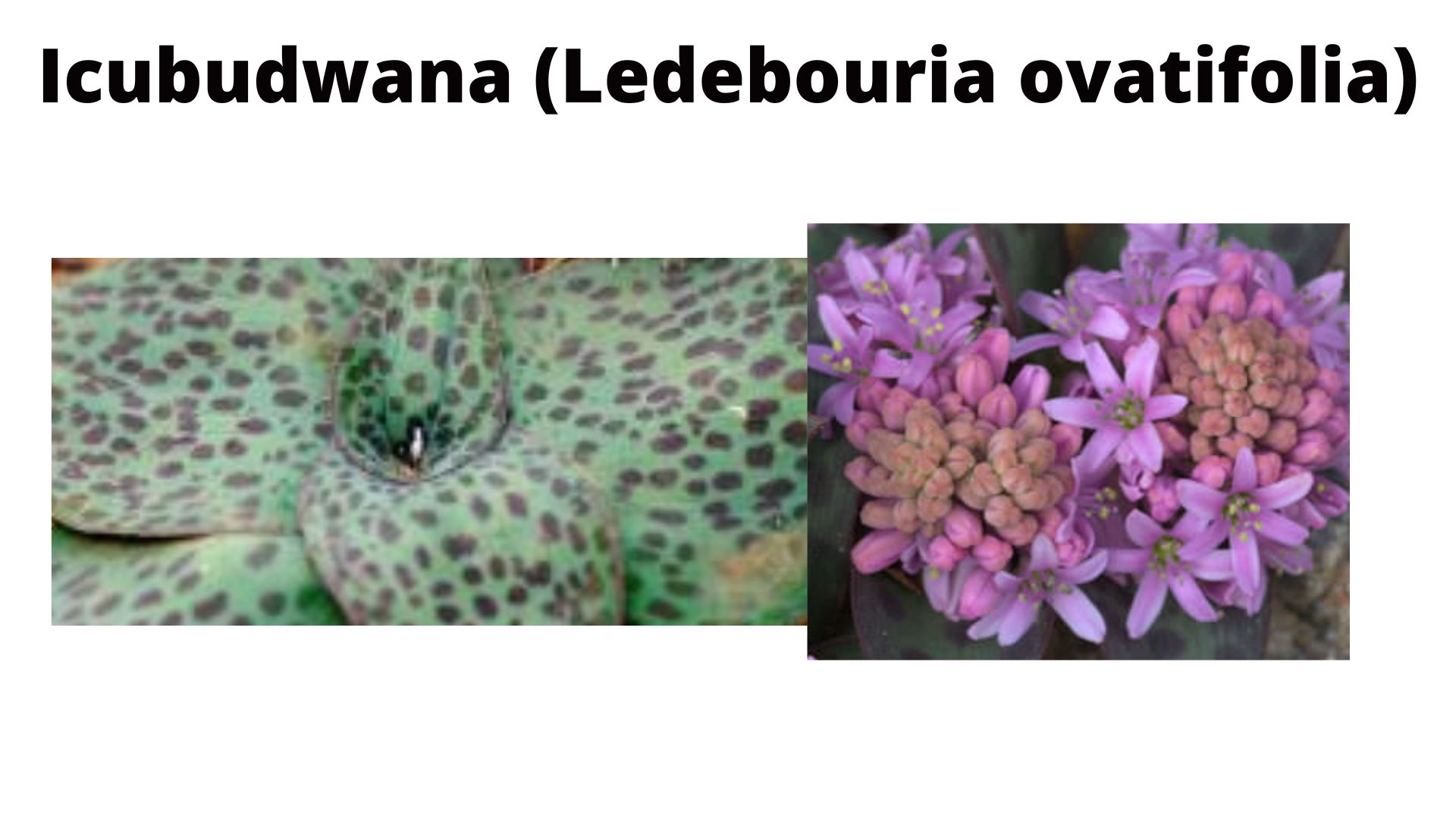Family: Hyacinthaceae
Scientific name: Ledebouria ovatifolia
Authority: (Baker) Jessop
Variation: subsp. ovatifolia
Common names: icubudwana (Zulu), flat-leaved African hyacinth (English)
Plant description
Icubudwana is a very unique plant in that it does not look like a typical plant. The plant grows with its broad leaves lying flat against the surface of the soil. Only a few of these leaves are produced at a given time. With no flowers, it can be mistake for an African bullfrog.
The plant’s scientific name is Ledebouria ovatifolia. It gets the genus name Ledebouria after a German botanist Professor Karl Friedrich von Ledebour. The species name ovatifolia means oval-shaped leaves. The plant mostly grows in the grasslands and the savannah of the Eastern Cape, KZN, Northern Free State and Northern Province.
Uses
The bulb is the part of the plant that is extensively used in traditional medicine to treat a number of ailments. The plant has a number of bioactive compounds that are of medicinal value, these include antibacterial, antifungal, and anti-inflammatory properties.
The plant is used for the following:
- To treat backache, influenza, diarrhoea, and skin irritation.
- Pubescent Zulu girls in some parts of KZN rub the leaves on their breast, to make them grow.
Preparation
When preparing to use the plant, the bulb is crushed and soaked in warm water overnight and consumed three times a day to treat inflammation in the stomach and intestine which may stem from bacterial infections of viral toxins causing vomiting and diarrhoea.
Safety precaution
The use of traditional medicine in prescribed dosages will yield good results. Misuse and abuse may lead to complications. To learn about correct dosage, consult a traditional healer or a herbalist. You can also visit imithiyesintu.co.za or email: info@imithiyesintu.co.za to learn more about traditional medicine.
